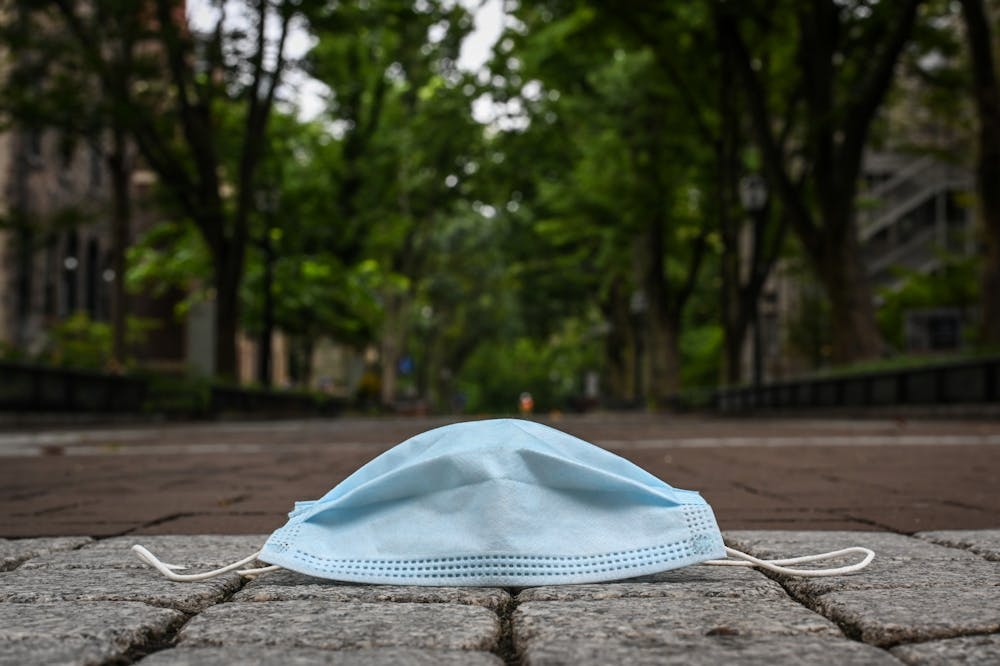
Sit in any Penn lecture hall and you’re likely to hear a chorus of coughs, sneezes, and sniffles — something that, as COVID-19 cases rise and new variants develop, is enough to make any person uneasy. Colleges across the country have been experiencing the consequences of in-person learning amidst the pandemic. Just weeks after opening their doors, numerous colleges — including Connecticut College, the University of Dallas, Liberty University, and Rice University — temporarily transitioned back to online learning after an outbreak of cases, many of which were among vaccinated students. And despite a vaccination rate of 85%, La Salle University in Philadelphia temporarily went virtual last week after a “concentrated increase” of COVID-19 cases.
Back at Penn, administrators seem to be optimistic that the entire semester will remain in-person, as the campus positivity rate is currently at 0.38% with no detected classroom transmission. But if Penn wishes to make good on their promise of maintaining an in-person experience, they must prioritize prevention. Despite their stringent COVID-19 protocols last semester when classes were still virtual, after inviting students back for a fully in-person school year, the guidance from the administration this semester has thus far been disjointed, uncommitted, and confusing.
In their initial guidance on their COVID-19 protocols, Penn emphasized the implementation of a screening test program, wherein a random sample of vaccinated students and faculty would supposedly be selected and required to get tested within two weeks of their selection. But four weeks into the year, the university has been painfully slow on public updates to the screening process.
In the absence of this program, the University has absolutely no line of defense against COVID-19 outbreaks, and no way to discern the true positivity rate on campus. Not implementing a testing system after stating they would speaks to Penn’s lack of commitment towards containing the pandemic.
But even if this testing program is implemented, it will not be enough to track new cases on campus. The CDC recommends isolation for ten days after symptom onset, allowing potential cases to completely evade detection on this random bimonthly testing system. So even if the positivity rate appears promising right now, it does not reflect the true number of cases on campus. Consistent and frequent campus-wide testing is needed to truly get an accurate picture of campus transmission and detect cases before they spread out of control.
In addition to a lack of a testing system, there are no obstacles in place that would prevent a sick student from entering buildings or going to class. Last semester, testing was strictly enforced — if you skipped your weekly tests, you would receive a red PennOpen Pass and be prevented from entering any campus buildings until you scheduled a new test. This semester, a green pass is only required to enter the libraries and medical buildings and relies entirely on students self-reporting symptoms. But considering the coughing you might hear in any library, PennOpen Pass is doing little to control the spread of sickness throughout campus, COVID-19 or otherwise.
The lack of a safety net for sick students who must miss class has also posed a significant problem. Considering recording class lectures and recitations is not mandatory, sick students are incentivized to come to class regardless of health to avoid falling behind in their classes. They even avoid getting tested out of fear that they will be placed in isolation. While recording lectures is up to the professor, the administration has largely failed to present a unified front on the procedure for sick students, leaving many confused and apprehensive about the university’s protocols.
Despite a few COVID-19 outbreaks last semester, the University's policies as a whole were much more robust and allowed the University to quickly respond to any cases. But against all logic, the new policies this semester are more for show and accomplish little, even though thousands more students are now on campus, attending classes, and socializing together. Instead of a symptom tracker that relies entirely on honor or a random bimonthly testing system that hasn’t even been implemented yet, Penn ought to establish a mandatory campus-wide weekly testing program, and give clear and comprehensive guidance to sick and exposed students.
Penn has a responsibility both to their students, faculty, and the larger community of West Philadelphia to do everything they can to prevent the spread of COVID-19. Considering the prevalence of breakthrough COVID-19 cases and the rise of possible vaccine-resistant variants, we can’t just rely on vaccination rates and mask mandates to keep us protected.
Penn has proven that they have an effective testing system and adequate resources to stop the spread of COVID-19 and keep their students safe; they just need to use them to ensure we have a safe, completely in-person year.
TAJA MAZAJ is a College sophomore from King of Prussia, Pa. Her email is tajam@sas.upenn.edu.
The Daily Pennsylvanian is an independent, student-run newspaper. Please consider making a donation to support the coverage that shapes the University. Your generosity ensures a future of strong journalism at Penn.
Donate







